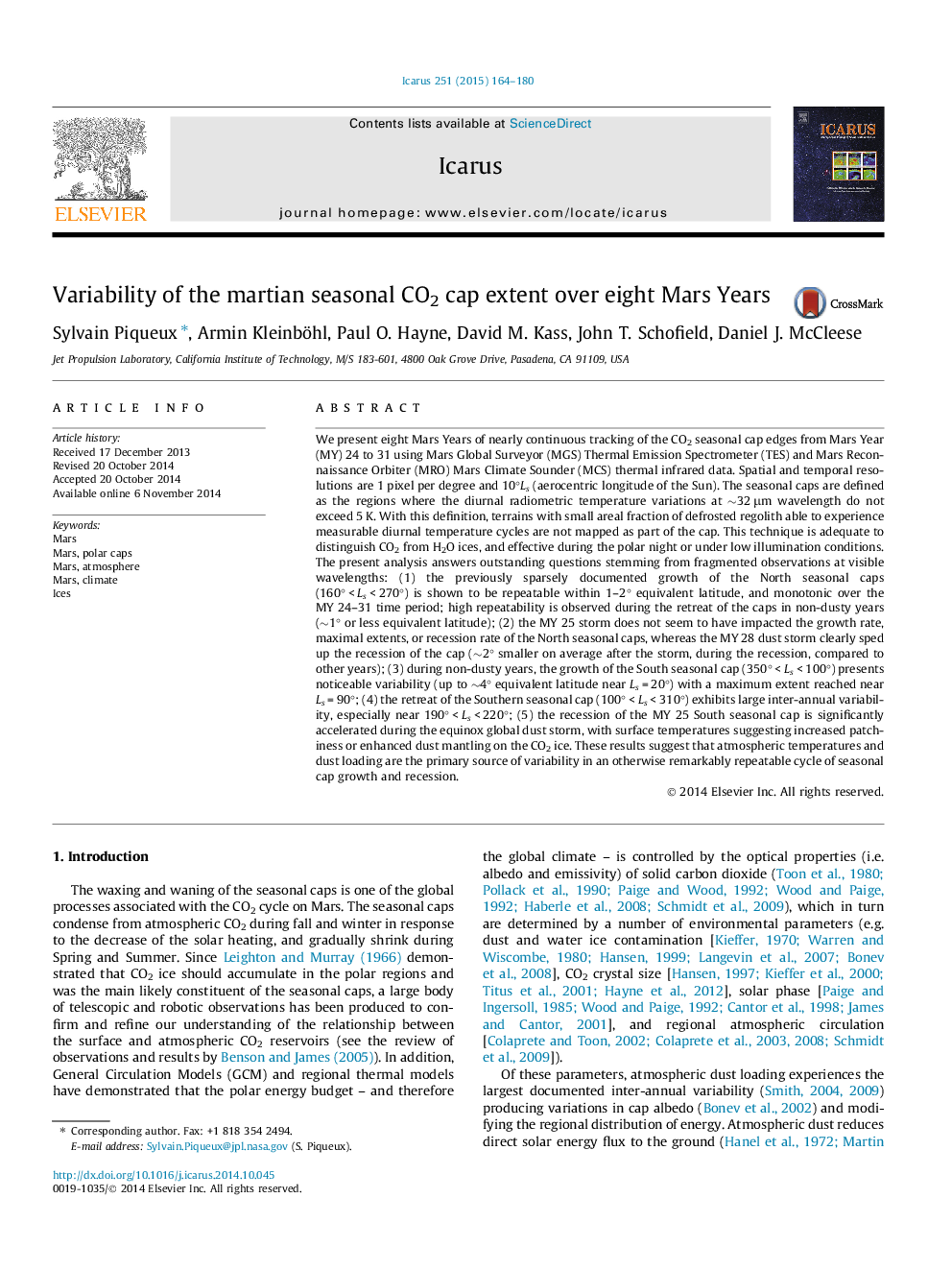| Article ID | Journal | Published Year | Pages | File Type |
|---|---|---|---|---|
| 8136660 | Icarus | 2015 | 17 Pages |
Abstract
We present eight Mars Years of nearly continuous tracking of the CO2 seasonal cap edges from Mars Year (MY) 24 to 31 using Mars Global Surveyor (MGS) Thermal Emission Spectrometer (TES) and Mars Reconnaissance Orbiter (MRO) Mars Climate Sounder (MCS) thermal infrared data. Spatial and temporal resolutions are 1 pixel per degree and 10°Ls (aerocentric longitude of the Sun). The seasonal caps are defined as the regions where the diurnal radiometric temperature variations at â¼32 μm wavelength do not exceed 5 K. With this definition, terrains with small areal fraction of defrosted regolith able to experience measurable diurnal temperature cycles are not mapped as part of the cap. This technique is adequate to distinguish CO2 from H2O ices, and effective during the polar night or under low illumination conditions. The present analysis answers outstanding questions stemming from fragmented observations at visible wavelengths: (1) the previously sparsely documented growth of the North seasonal caps (160° < Ls < 270°) is shown to be repeatable within 1-2° equivalent latitude, and monotonic over the MY 24-31 time period; high repeatability is observed during the retreat of the caps in non-dusty years (â¼1° or less equivalent latitude); (2) the MY 25 storm does not seem to have impacted the growth rate, maximal extents, or recession rate of the North seasonal caps, whereas the MY 28 dust storm clearly sped up the recession of the cap (â¼2° smaller on average after the storm, during the recession, compared to other years); (3) during non-dusty years, the growth of the South seasonal cap (350° < Ls < 100°) presents noticeable variability (up to â¼4° equivalent latitude near Ls = 20°) with a maximum extent reached near Ls = 90°; (4) the retreat of the Southern seasonal cap (100° < Ls < 310°) exhibits large inter-annual variability, especially near 190° < Ls < 220°; (5) the recession of the MY 25 South seasonal cap is significantly accelerated during the equinox global dust storm, with surface temperatures suggesting increased patchiness or enhanced dust mantling on the CO2 ice. These results suggest that atmospheric temperatures and dust loading are the primary source of variability in an otherwise remarkably repeatable cycle of seasonal cap growth and recession.
Related Topics
Physical Sciences and Engineering
Earth and Planetary Sciences
Space and Planetary Science
Authors
Sylvain Piqueux, Armin Kleinböhl, Paul O. Hayne, David M. Kass, John T. Schofield, Daniel J. McCleese,
